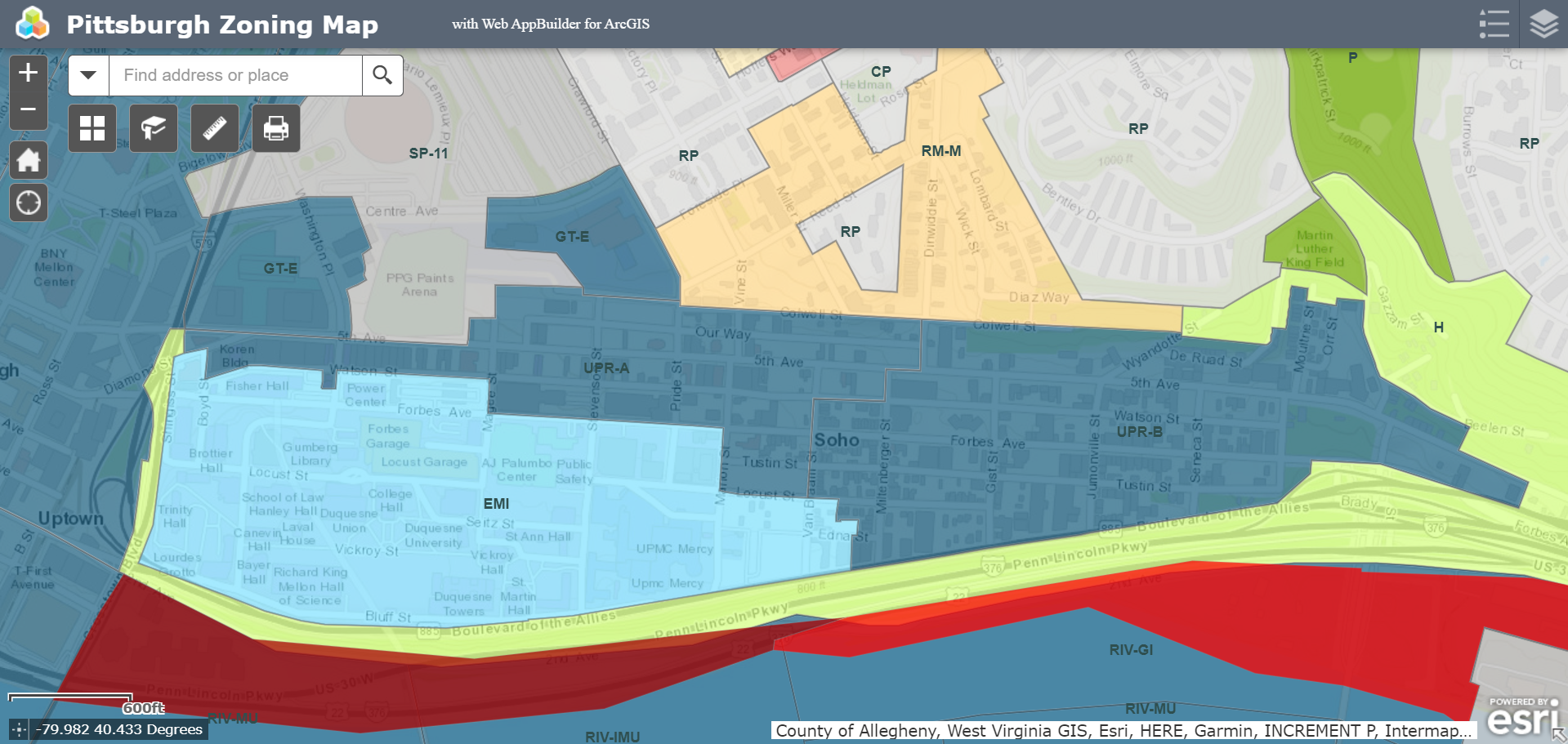Pittsburgh Zoning Districts - UPR-B Overview
By Kathleen Oldrey
Introduction
Zoning districts are a fundamental building block of zoning regulations and set the base use, height, and density standards for the area they cover. In some cases, the district also sets the required level of zoning review. Pittsburgh has over 50 distinct mapped zoning districts. This series of guides is unpacking each of these districts.
In this post, we provide an overview of the challenges when working on a site in the UPR-B (Uptown Public Realm Subdistrict B: Residential Core) subdistrict. Additional posts dive into the use and density regulations for the UPR-B and provide an overview of the full UPR, the other subdistrict: UPR-A, and the performance points system.
Refer to our Introduction to Pittsburgh’s Zoning Districts for the complete list of base zoning districts in the city. Pittsburgh’s interactive zoning map can be used to verify the project site’s zoning district.
Overview
The UPR-B (Uptown Public Realm Subdistrict B: Residential Core) zoning district covers 0.10 square miles or 0.21% of Pittsburgh. Like the UPR-A subdistrict, the UPR-B subdistrict roughly follows Fifth Avenue, and is bounded by Boulevard of the Allies to the south and Colwell Street to the north. The UPR-B also shares boundaries with the RM-M, H, and EMI zoning districts.
Challenges
The UPR-B’s purpose statement (908.04.D.2.a) emphasizes infill development and an increase in residential uses as well as “creative/industrial and live/work uses.” Requirements that apply to the entire district of course apply to the UPR-B subdistrict, but the UPR-B subdistrict does not include the Pittsburgh 2030 District requirement that applies to the UPR-A.
A significant portion of the UPR-B’s Colwell Street boundary is within a Landslide-Prone Overlay area, and the UPR-B also includes some areas of potential Steep Slope Overlay areas. Additional documentation may be required for projects in these overlays. Also, like the UPR-A, all of the UPR-B is within a Registered Community Organization area and is subject to all associated requirements when project thresholds are met.
Conclusion
As in the UPR-A, public processes may be required in order to meet RCO and public realm district standards in the UPR-B. Depending on location within the subdistrict, projects may also be subject to additional environmental review.

